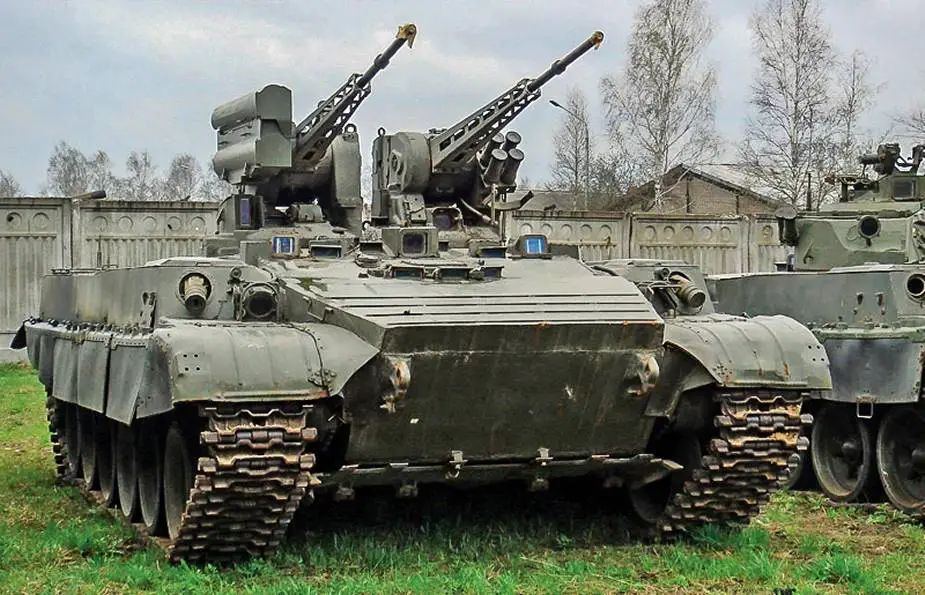Five tanks that Russia did not produce
MOSCOW, September 13. /TASS-DEFENSE/. Many of the tanks had unique characteristics but remained only “objects” that were not produced. Some experts called them exclusive designs in the global tank construction.
Follow Army Recognition on Google News at this link

Object 781, a precursor of BMPT-72 Terminator, designed in 1985 (Picture source: firearmcentral.fandom.com/wiki/Ob._781_Sb.7)
Upgraded T-34
The upgrade of the legendary T-34 Soviet tank of the Great Patriotic War began in 1940. Open sources said the upgrade was necessitated by comparison with the German Panzer III procured in Berlin after the signing of the non-aggression pact. Soviet engineers and tankmen found out that the German tank had considerable advantages in speed, armaments and armor. Besides, the conditions inside tank were much more comfortable.
T-34 upgrade began in the winter of 1941 under the supervision of designer Alexander Morozov. The Soviet tank received a more powerful engine of 600 HP (against 500 HP), candle suspension was replaced by a torsion one, the turret got a small commander’s turret in order to expand the internal space. The round of munitions increased from 77 to 100 shells and the upgraded T-34 was one ton lighter than the predecessor. T-34M had to replace T-34 in June 1941, but the war began and the plant was evacuated deep into the country. Designers dropped T-34M plans.
Dragon tank killer
Object 150 or IT-1 was the name of the first and only self-propelled missile tank killer. Uralvagonzavod in Nizhny Tagil designed the unique vehicle in the late 1950s on the basis of a serial T-62 tank. IT-1 had to destroy hostile hardware by an antitank complex on the turret called the Dragon. It fired guided missiles capable of piercing 250-mm thick armor. The vehicle could fire stationary and in motion and the hit probability comprised 90 percent at a distance of 3 km.
At the final trials, IT-1 destroyed three tank targets in several minutes and it was decided to launch its batch production.
In 1966-1970, 220 tank killers were produced. However, the vehicle was decommissioned in the mid-1970s, but its experience confirmed the correct combination of classical guns and guided missiles. The Soviet tanks of the 1970-80s received powerful smooth-barrel guns capable of firing armor-piercing and high-power shells and guided missiles from the barrel. Today the principle is used by the latest Armata T-14 tank and the best foreign tanks.
Object 140
The armor and the shell have been always competing. As more powerful guns and munitions appeared, designers increased the protection and created armored hulls and turrets with the most advantages in anti-projectile form. The top achievement was ‘object 140’ produced in Nizhny Tagil in the 1950s. The designers wanted to increase armor by several hundred kilograms and saved on the running gear. It was for the first time made of aluminum alloy. The engine was turned to the side, which demanded a major upgrade of the engine compartment, the crankshaft and other units, but decreased the height of the engine-transmission compartment. The designers created the hull from curved profiles of changing thickness to ensure maximum anti-projectile resistance.
However, all the efforts were in vain. Cumulative munitions of the 1950s easily pierced the armor of 140, as well as T-54 and T-55. The protection of next-generation T-64, T-72, and T-80 tanks was reinforced by multilayered obstacles and reactive armor instead of the thickness and form of steel constructions.
Tank and turbine
In the 20th century, designers had to increase the weight of tanks, as they needed more armor, new guns and devices, and a bigger round of munitions. More powerful engines were required, but with the same weight and size as the engine-transmission unit. The aviators prompted a solution in the 1950s. It was a gas turbine engine. The leadership of the armed forces backed the idea by the end of the decade.
The gas turbine engine was initially tested on T-55, but it became clear that an advanced running gear was necessary. Uralvagonzavod offered ‘object 167’, which was earlier put aside in favor of ‘object 432’ made in Kharkiv, which developed the T-64 tank. Thus, ‘object 167T’ appeared.
Uralvagonzavod had to admit that the idea did not justify itself, as the tank demanded a gas turbine engine of a specific construction. However, the running gear of ‘object 167’ was tested in full. Several years later Uralvagonzavod used it in its new T-72 tank.
Tank support vehicle
In the early 1970s, western infantry was armed with handheld antitank grenade launchers, which posed a threat to Soviet tanks. The Soviet industry responded with a highly protected armored vehicle to protect tanks in the battlefield against grenade launchers and missiles and simultaneously destroy several targets.
The new vehicle was developed from the T-72 tank and was called an armored tank support vehicle (BMPT 781). It received independent combat modules for modern arms, as well as automatic remotely controlled guns.
In 1989, Chelyabinsk Tractor Works produced four prototypes of ‘object 781’. However, the project was stopped in 1991 as the USSR collapsed and the conversion of military production began. Nevertheless, the ideas implemented in the vehicle are still alive. They were used in modern Terminator BMPT, which was properly performed in Syria.
© Copyright 2021 TASS / Army Recognition Group SPRL. All rights reserved. This material may not be published, broadcast, rewritten or redistributed.


























